Australia So Much to See


The Great Southern Highway - York to Narrogin
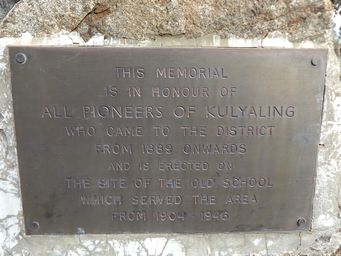
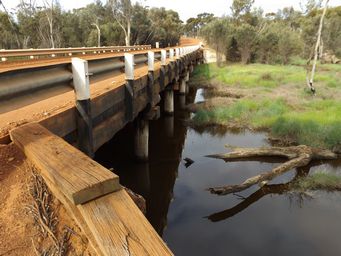
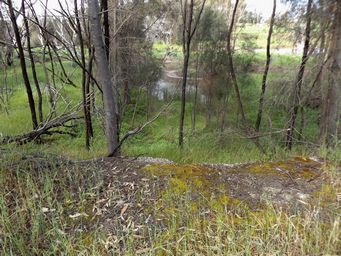
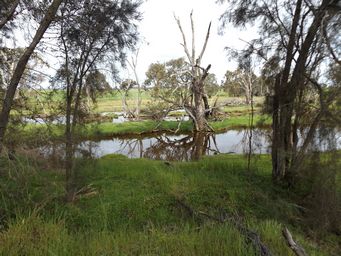
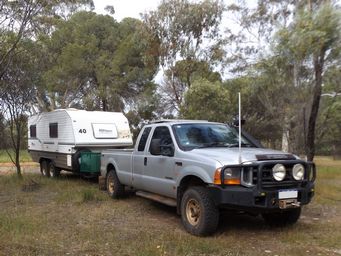
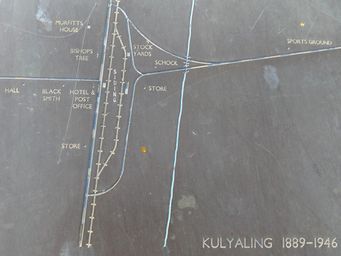
Beverley is only 33 kilometres south of York. This townsite was established in 1868 and has some fine examples of early architecture. Buildings such as the Old Court House, the Union Bank building, the ANZ Bank, the Post Office and the former Roads Board Office are just a few examples of the lovely and well preserved buildings. You can examples of the history of aviation in Western Australia at the Aeronautical Museum. The beautiful old Railway Station now houses an Art Gallery. The oldest building in Beverley, the “Wheatsheaf Inn” was built by Alfred Smith in 1872. It now houses a very fine collection of artefacts depicting life in Beverley since settlement in 1831 as the Dead Finish Museum. Run by volunteers and open Sundays 11.00 am to 3.00 pm mid March to end of November, or by arrangement with the Visitor Information Centre 0896461555.
Brookton a further 33 kilometres south of Beverley was originally a railway siding named Seabrook, after the first European settler John Seabrook, who took up land in 1846. The town of Seabrook was gazetted in 1895 but as this duplicated a locality of Seabrook near York, the name was varied to Brookton in 1899. The Old Police Station Museum, and Pioneer Park at the OId Railway Station show the heritage of the town.
We called in to Kulyaling Pioneer Memorial Picnic Area for the night, approximately half way between Brookton and Pingelly. A memorial to the pioneers of the area is in the large site. This is the site of the former Kulyaling school, alongside the Avon River South Branch. The school commenced in 1904 and closed in 1946.
On the Beverley-Albany Great Southern Railway this siding opened in November 1900 named Moorumbine, renamed Westbrook March 1901, subsequently named Kulyaling in 1907. The siding was closed and removed in 1972. From West Australian Rail Scene (link no longer available).
Moorumbine
was a siding on the railway line eight kilometres east of Pingelly, and from the now deserted town, the church still remains.
See Moorumbine.
Near
to Kulyaling Pioneer picnic area, on the west side of the Great Southern Highway, there is stone ruins of Murfitts House.
A little further south an area of small lots indicates a surveyed former town site, now just a farm paddock. This is where the
Post Office, Hotel, Hall, general store and blacksmith shop once stood.
Boyagin Nature Reserve is sixteen kilometres west of the highway and can be accessed from Kulyaling West Road via unsealed roads (follow signs). At the eastern edge of the reserve, a picnic area alongside the large granite outcrop Boyagin Rock, is another good overnight stop. This is an important nature reserve widely recognised as one of the few areas of original fauna and flora left in the Wheatbelt. Rich in wildflowers in spring, it is a good reserve for orchid spotting. There are stands of powderbark wandoo, jarrah and marri, with numbats and tammar wallabies inhabiting the reserve.
Kulyaling was a quiet and interesting place to stop for our last night of our Mid West and Wheatbelt holiday (below).
Being close to two numbat spotting hotspots; the Dryandra Woodland Conservation Park and Boyagin Nature Reserve (see above),Pingelly has chosen these cute little mammals for their entry statement.
Moorumbine, situated eight kilometres east of Pingelly, was the first townsite in this area, settled in 1864. The Moorumbine Heritage Trail is a short walk or drive through the old townsite and features many sites of historical significance including the early settlers’ cottages and St Patrick’s Anglican Church which was consecrated in 1873 and is still in use today. From Shire of Pingelly.
At Pingelly we turned westwards, intending to follow the Williams-York Road via Pumphreys Bridge. An old bridge crossed the Hotham River here, near where the Pumphrey family farmed from the 1860s. The mud brick homestead still remains, having undergone restoration in 1989. See State Heritage.
The bridge was constructed in 1905. Minor repair works were carried out in 1938, and in 1950, the Main Roads Department tested its safety, finding that the foundation timbers were stable enough for another fifty years. State Heritage.
The tennis club was established in 1946 and is still going and there is a small oval. Toilets are always open at the sporting complex. There is a CWA Hall near the old bridge.
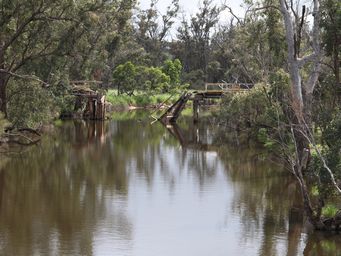
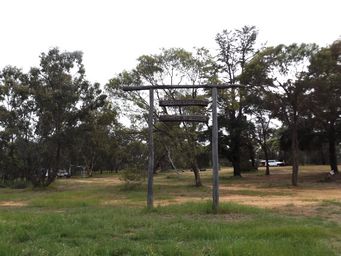
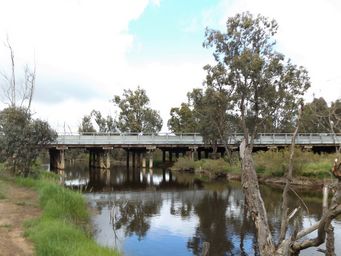
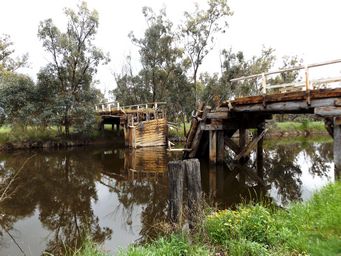
Nearby, the modern bridge crossing the Hotham River on the York - Williams Road
We had intended following the York – Williams road to Williams, but somehow turned off it onto the wider Wandering – Narrogin Road. Both of these roads travel through pars of the Dryandra Woodland Conservation Park, and this road was in part new to us so we continued on to Narrogin.
Narrogin is a regional centre for the western wheatbelt, with a good range of shops and services, sporting venues and schools. When the Great Southern Railway line went from Perth to Beverley, Narrogin grew as a service centre on this line and it has remained one of the largest wheatbelt towns, with only Northam being larger. There is a boarding hostel for senior high school students, an agricultural college, and a TAFE centre.
There are some lovely old buildings, including those below. It is close to the Dryandra Woodland Conservation Park.
Williams is the next town we visit after our short detour through Narrogin. Williams is a small town on the Albany Highway, which is a major route through the south part of the state. Pre-dating Narrogin, it did not develop in the same way. Being only thirty kilometres from the major regional centre Narrogin, Williams has remained small.
The main feature in the town is The Williams Woolshed, a combined tourist centre with displays, a café, shops selling principally woollen goods and agricultural orientated products.
With accommodation such as the hotel, motel with caravan park, cottages and farm stays it is a good stopping point between Perth and Albany. It is also a suitable as a base for visiting the Dryandra Woodland Conservation Park.
See more of the wildflowers we saw here and throughout Western Australia.
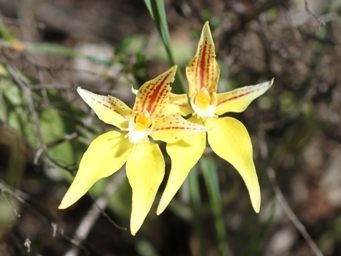
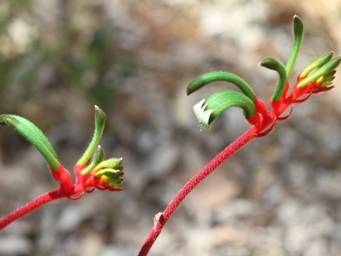
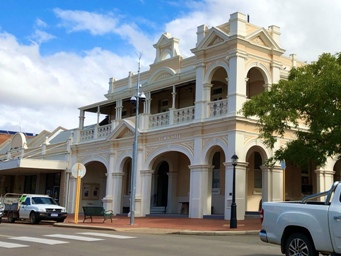
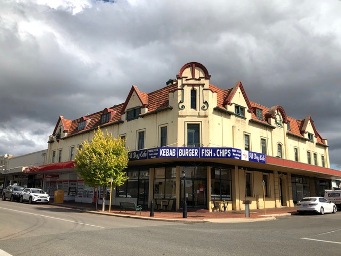
Narrogin town council run a caravan park, and there are a range of other accommodation options. Free 72 hour parking for self contained; in town, on Fairway Street in the Old Goods Shed Yard. Dump point on site. Also to the south side of town, at the Narrogin Railway Dam Reserve.
Near the caravan park is the sixty hectare Foxes Lair Nature Park. This reserve has walking trails and picnic areas, as well as been a haven for animals on the edge of an urban area. In spring it has an abundance of wildflowers, especially orchids. With different soil types in the park, there are a variety of eucalyptus trees.
The Narrogin Town Hall (above left) was built in 1908, and is still in use today.
Mardoc building (above right) was built
in 1911 for WG Cornwall by TH Brown, designed in Dutch Colonial style by BH Dods. As the first general store in Narrogin, it
was known as the Cornwall Buildng. The upper floors were first used as a Coffee Palace; later becoming a Temperance Hotel Guesthouse,
then Mardoc Guest House, believed to named after Mrs (Ma) Docking. The ground floor has always housed a wide variety of retail
outlets. Renovated in 1990 retaining its heritage values. Ref: Mardoc Building and signage on the Narrogin Heritage Walk.